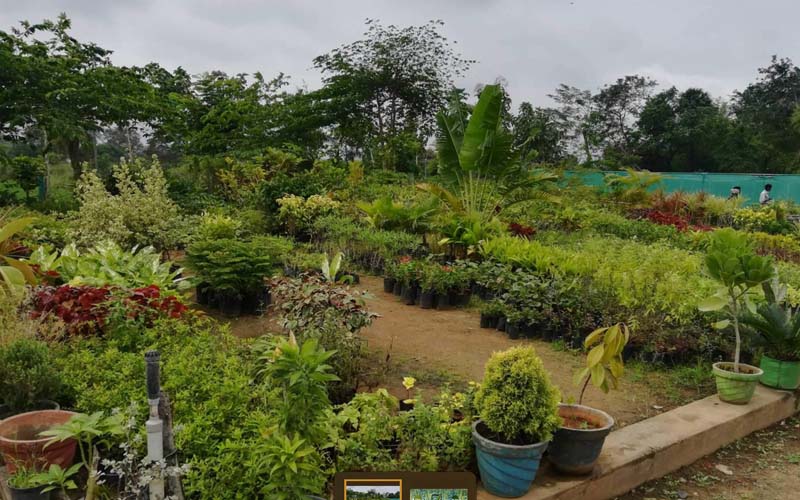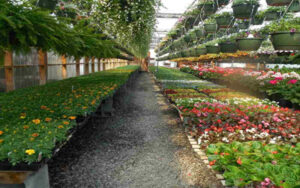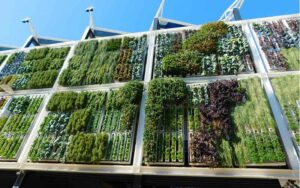The Impact of Nursery Hubs on Urban Cities
Going “green” and safeguarding natural ecosystems appears to be a top priority for any administration these days. We are all aware that the globe has always been influenced by topography and ecological processes. It’s high time for green growth.
For the first time in history, towns and cities now house more than half of the world’s population. By 2050, this figure is expected to rise to 66 percent. According to a report by the United Nations in 2016, poverty and other socioeconomic problems, particularly in Asian nations, are driving people to migrate from rural to urban regions.
Post-pandemic, the world is looking at a future where everyone wants to go greener and healthier. The only way to do that is to be close to nature.
Towns are transforming into cities and cities continue to eat into our greens. Without any land use planning strategy in place, and demand for increased urbanization, ensuing human activities have devastating consequences for forests, landscapes, and green areas in and around cities. Increasing pollution, and massive poverty, topped with food and resource scarcity, clubbed with the growing frequency of catastrophic climatic events are triggers that disrupt the natural surroundings.
According to Dr. Cecil Konijnendijk, a research professor of urban forestry at the University of British Columbia (UBC), an estimate says that 9 million people die every year as a direct result of air pollution. The need of the hour is to formulate a strategy to turn our cities into healthy liveable spaces and create an environment to fit in more and more people.
What to do to bring about such a transformation?
How to absorb people migrating into already crowded spaces?
A growing amount of data suggests that we should reintroduce nature into our lives. It is high time we sneak a peek into our daily habits, e-waste, and artificial spaces. It is time to align Mother Earth with ourselves, to listen to her, and the simplest way to start is by planting trees. There is no better substitute for fresh air than getting it directly from our trees.
Living green should be considered as vital as roads or public transportation. More essential are the impacts of green living on our health and well-being, which cannot be overstated. Unsurprisingly, this evidence is corroborated by a report commissioned in 2010 by Beyond Blue Australia, which found that the natural environment promotes health and well-being while also avoiding sickness and assisting individuals in recovering from illness.
It becomes our prime responsibility to make cities sustainable and functional. Part of the solution might be found in your own nursery hub and how they impact green growth drastically.
In one of the reports of the working group on Horticulture, Plantation crops and Organic farming for the XI five-year Plan (2007-12), Planning Commission, Government of India (GoI), 30-40% demand for planting material is being met by the existing infrastructure, which includes nurseries prominently. (Source: Resource Book on Horticulture Nursery Management, NAIP, ICAR, 2012)
Nurseries have had an influence on “public landscaping and urban forestry programmes that foster mutually beneficial interactions between city inhabitants and their surroundings.” In a nutshell, it’s turning cities green! The most frequent methods are to include trees, parks, and manicured green zones in newly constructed metropolitan developments.
There are many benefits of having a nursery hub.
Urban greening reduces air and noise pollution, soaks up precipitation that would otherwise cause flooding, provides a home for local animals, and has been found to boost morale in those who view it while also slowing traffic and reducing urban crime. As climate change becomes a more visible concern, architects and city planners alike have been looking for methods to construct sustainable communities. These nurseries pump vast amounts of oxygen into the air around them, as well as absorbing equally vast amounts of carbon dioxide which would otherwise be hazardous to people all across the globe.
Contributes towards employment and running source of income.
Fruit orchards, ornamental, vegetable, and landscape gardens have a wide range of applications in public spaces, roads, and cooperative housing societies. It ensures the development of genetically modified planting material of high quality. It creates opportunities for technical, skilled, semi-skilled, and unskilled labour. They are a major source of seedlings for businesses such as fruit, pulp and paper, fuel wood, lumber, and others.
Contribution towards a better environment and sustainability model.
Eco-friendly greenhouses and nurseries are retail plant growers who are making extra efforts to become sustainable businesses and improve their business practices. Steps to accomplish this can include converting practices to organic gardening, composting, implementing water conservation techniques, reusing containers and using eco-friendly materials, and planting and selling native plants. Making these extra efforts to safeguard the environment may help you save money, improve your brand, and attract environmentally concerned clients. Good stewardship and sustainability are essential components of greening your firm, both environmentally and financially.
Nurseries will need to extend their production range to meet the need for a more diversified supply of urban trees. Some nurseries are leading the charge in increasing their catalogs, relying on tree selection guidelines that detail the morphological and physiological features of species that determine their appropriateness for and contribution to the urban context. Nurseries should be included early in conversations to control supply and demand dynamics for urban forests.
The socio-economic advantages
The socioeconomic advantages of private small-scale tree nurseries in the study cities were calculated using income, uses/purposes of income, and job possibilities. The findings revealed that nursery seedling production serves a variety of functions for the owners. Private nursery operators were engaged in nursery business activities as well as additional tasks such as decorating and greening. These activities generated revenue and income for the nursery owners, who used the cash from nursery output for subsistence purposes like purchasing clothes, food, and education for their children, as well as rituals in both Gondar and Bahirdar.
Finally, no one can dispute that when you see shining, bright, and robust plants, you are tempted to have them in your garden and anywhere else you spend your time.
Nursery hubs in urban cities are contributing to the improvement of the environment in many ways.







